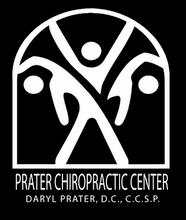
Feeling a bit sore? Rest assured you are not alone and are probably feeling about as beat up as New England Patriots Quarterback Tom Brady. Let’s face it, the last three weeks not only saw increased mileage, but the added challenge of running high mileage in snow, ice and slush.
Slipping and sliding through snow, ice and slush like we have over the past few weeks can sabotage your running form. Your muscles tense and are not used the same way they are when you run on dry surfaces. As a result, you become sore, and your risk of injury increases. Ice cleats can help in some, but not all conditions. You can read a review of several of the most popular via this Ice Cleats Review from Runners World.
The amount of muscle soreness you experience tomorrow will always be directly proportional to how far you work your muscles beyond what they are accustomed to today. Below are some tips in dealing with muscle soreness:
Start Slow, Warm Up: Always precede any high-intensity running you do with easy jogging and stretching. These precautions warm and lubricate the muscles, making the fibers less prone to tearing during the training. On Saturdays start slower than the pace you train. On Tuesdays always do a warm up slow jog followed by stretching before your work out.
Start Slow, Warm Up: Always precede any high-intensity running you do with easy jogging and stretching. These precautions warm and lubricate the muscles, making the fibers less prone to tearing during the training. On Saturdays start slower than the pace you train. On Tuesdays always do a warm up slow jog followed by stretching before your work out.
Cool Down: Circulation is the primary facilitator of the muscle repair process after intense exercise. Finishing workouts with low-intensity activity keeps circulation levels up without further damaging muscle fibers and thereby kick-starts the recovery process.
Stride Outs: The most effective way to minimize muscle soreness is actually to cause it in small amounts. Doing so results in structural adaptations in the muscle that make it more resistant to future tearing. To stimulate these adaptations, do four to six 100-yard stride-outs twice per week.
Stride Outs: The most effective way to minimize muscle soreness is actually to cause it in small amounts. Doing so results in structural adaptations in the muscle that make it more resistant to future tearing. To stimulate these adaptations, do four to six 100-yard stride-outs twice per week.
Easy Recovery Runs: Muscle soreness also has a tendency to accumulate if the muscles are not given adequate opportunity to heal between hard workouts. So you should always schedule recovery workouts (short and easy) between your harder and longer training sessions. You may not feel like a run will do any good but a short easy run will aid in your recovery.
Cross Training: Cross training such as spinning, using the elliptical trainer, swimming and water running may also be used during easy days and can aid recovery by increasing blood flow and adding to cardiovascular fitness without causing additional muscle damage.
Refuel and Hydrate: You should also consume protein immediately after your workouts. The faster you get protein into your body, the faster your body can go to work repairing muscle damage. Always consume plenty of carbohydrate, to restore energy, and fluids for hydration following workouts as well. The most convenient way to get all the nutrition your body needs for immediate post-run recovery is to simply drink a carbohydrate-protein sports drink (eg. Endurox). In one study, athletes who consumed such a drink after a hard workout exhibited 36% less muscle damage than a control group the next day.
Antioxidants: Antioxidants can also reduce muscle soreness. Oxygen radicals are believed to play a role in the cellular damage that follows the rupture of muscle fibers during exercise. By consuming a diet that is high in antioxidant vitamins and enzymes you can limit this damage.
Time: Time is the only true cure for muscle soreness. Certain treatments, however, can reduce the severity of the soreness you experience while time works its magic.
Time: Time is the only true cure for muscle soreness. Certain treatments, however, can reduce the severity of the soreness you experience while time works its magic.
Icing: Icing is the best way to reduce inflammation and the associated soreness. Combining a cold treatment with compression of the sore muscle, for example with a neoprene sleeve, is even more effective than a standard ice massage. Although not particularly appealing during the winter months, an ice bath is even better.
Elevation: Elevation is another tried-and-true treatment for inflammation. Simply sit with your legs propped above heart level for 30 minutes or more. Or simply put your butt up against a wall and raise your legs upon the wall for 10 – 15 minutes.
Massage or Self Massage: A visit to a massage therapist (we can refer you!) for a deep tissue massage or the use of a self message device such as The Stick can do wonders in enhancing circulation and stretching muscles.
Stretching: Frequent stretching also increases circulation and speeds the return to full mobility. Always stretch a sore muscle very gently, and if it is extremely sore, do not stretch it at all. In such a case light activity is a better alternative.
Many of these concepts are from:
That Hammered FeelingSimple Steps to Soften Muscle Soreness
by Matt Fitzgerald





